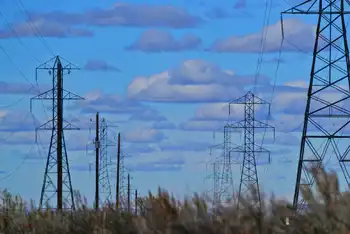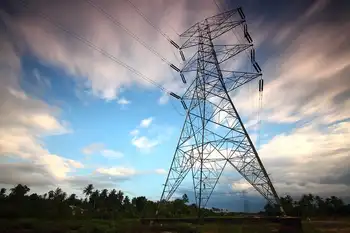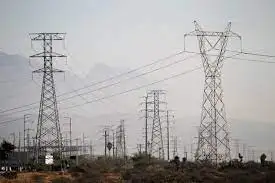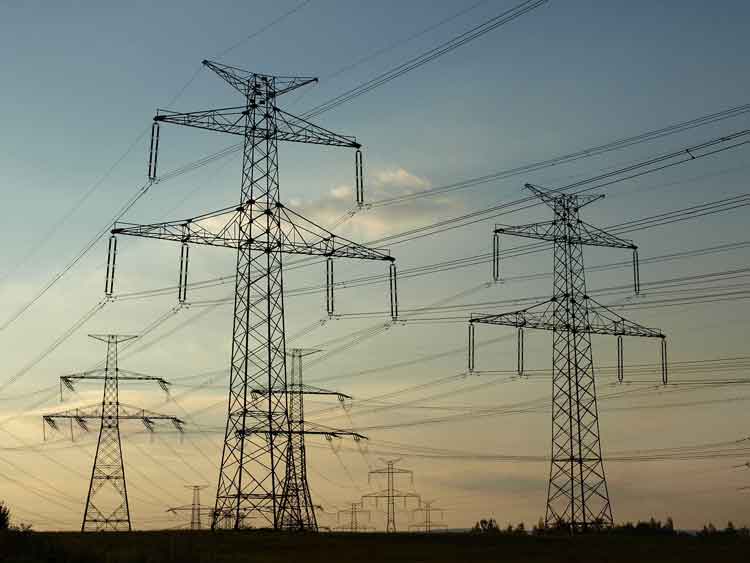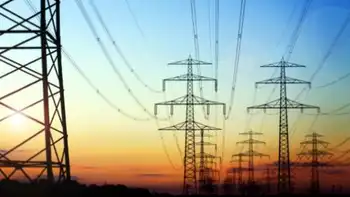Wood power worse polluter than coal
By Associated Press
NFPA 70e Training - Arc Flash
Our customized live online or in‑person group training can be delivered to your staff at your location.

- Live Online
- 6 hours Instructor-led
- Group Training Available
The six-month study, commissioned by Massachusetts state environmental officials, found biomass-fired electricity would result in a 3 percent increase in carbon emissions compared to coal-fired electricity by 2050.
Coal is considered one of the chief culprits of greenhouse gas emissions.
The report, conducted by the Manomet Center for Conservation Sciences, concludes that the net cumulative emissions of greenhouse gases from replacing coal-fired plants with biomass would be 3 percent greater by 2050 than from using coal to generate electricity.
Researchers arrived at the figure by comparing how much carbon is emitted into the atmosphere through the burning of wood — what they termed "carbon debt" — with the amount of carbon removed from the atmosphere from the regrowth of forests, or "carbon dividends."
The report found that harvesting trees for biomass facilities could have "significant localized impacts on the landscape, including aesthetic impacts of locally heavy harvesting as well as potential impacts on recreation and tourism."
The study has broad policy implications for states like Massachusetts. And environmental groups called the study "a wake up call."
"The sobering conclusion is that Massachusetts cannot produce very much new energy from forest resources while also protecting the health of our forests and reducing greenhouse gas emissions," said Sue Reid, a staff attorney for the Conservation Law Foundation.
Biomass has long been part of the state's portfolio of renewable energy sources, along with solar, wind and geothermal energy. The Patrick administration has already invested $1 million to jump-start four proposed wood-burning plants in Russell, Greenfield, Springfield and Pittsfield, as it tries to reach the state-mandated goal of reducing greenhouse gas emissions 80 percent by 2050.
Massachusetts Environmental Secretary Ian Bowles said the state is now rethinking that policy, including taxpayer incentives for wood-burning plants.
"Now that we know that electricity from biomass harvested from New England forests is not 'carbon neutral' in a timeframe that makes sense given our legal mandate to cut greenhouse gas emissions, we need to re-evaluate our incentives for biomass," he said in a statement accompanying the report.
Biomass plant owners have long argued that it's unfair to lump wood-burning plants in with coal plants. They say that every megawatt of power produced by wood-burning plants replaces a megawatt from a coal plant. But unlike coal, they argue, trees left standing can absorb the carbon dioxide released when wood is burned.
And trees cut down for fuel can be replanted. If done in a sustainable way, they say, the annual growth in trees replanted or left standing will be enough to recapture the carbon being released.
Matthew Wolfe, an executive with Cambridge-based Madera Energy Inc., which is developing the Greenfield plant, said the report ignores the fact that much of the fuel used by biomass plants is waste wood.
"By eliminating biomass as an energy option, you are by default promoting further use of fossil fuels," he said.
The report makes a series of recommendations, including forcing biomass facilities to detail where they get their supply of wood and requiring them to purchase wood from forests with approved forest management plans.
The report also recommends additional environmental protections at locations where trees are being cut down for biomass plants, including "requiring enough coarse woody debris is left on the ground, particularly at nutrient poor sites, to ensure continued soil productivity, as well as sufficient standing dead wildlife trees remain to promote biodiversity."
Bowles commissioned the study after environmental activists warned biomass power plants could add to global warming. Activists are also pushing a Massachusetts ballot question to severely restrict the amount of carbon dioxide the power plants can emit.
Massachusetts is planning a series of hearings on the report beginning in July.





